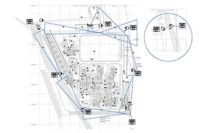You probably have been asked some crazy questions while you were in a customer’s home, making it secure and helping people feel safe. It is inevitable that someday a customer is going to ask you a technology question that you can’t answer. In the ensuing silence, you may miss an opportunity to be the customer’s go-to home technology professional and fail to earn some potential revenue. Therefore, it may be time to catch up on those other residential topics that sometimes elude home systems professionals.
Should I Install a Home Theater or a Media Room?
For many, the phrase “home theater” conjures images of a dark, dedicated space with a big screen and theater-style seating. However, a new trend is emerging where more home theater installations are being done in open spaces such as living rooms and family rooms.
Which is appropriate for your customer? There are many factors to take into account. The dedicated home theater space lends itself to a system designed to deliver ultimate performance. If they are looking for a no-holds-barred home theater installation, the dedicated space is likely the way to go. A media room, however, provides a more inviting look. With seating typically in the form of couches and love seats, the viewing experience is more social.
What Is HDMI?
HDMI is the mother of all digital connections and the one to use as much as possible. Why? It is the best connection option available today. One multi-pin HDMI cable carries up to eight audio channels, plus video and other data.
There are four types of HDMI cables: high or standard speed that come with or without Ethernet (for computer connections). The bottom line: The old analog days of using separate cables for audio and video are fading fast. This information will help you explain HDMI to a client, but as an installer, HDMI comes with its own set of nuances that you will need to know more about.
Should I Invest in 4K?
The move from standard-definition TV and DVD, to high-definition TV and Blu-ray discs brought a leap in picture quality that is obvious on any size screen. Going from HD to 4K can be equally stunning, but because there is a limit to the level of detail our eyes can resolve, you need a very large screen to appreciate 4K’s incredibly fine resolution, which is one reason it is gaining momentum in movie theaters.
In a typical home setting with a 40- or 50-inch TV, you would have to sit very close to appreciate the extra detail — but that would be like sitting in the first few rows in a theater, which isn’t necessarily practical or comfortable. Still, these new formats are simply the next step in the evolution of display devices. 4K has been widely covered in the residential industry so there is no shortage of opinions on the topic.
These are definitely hard questions to answer; the good news is CEDIA can help you. You can learn more about home theaters and media rooms at CEDIA’s Home Theater Bootcamp; visit cedia.net/training to learn more. When it comes to HDMI and 4K, CEDIA offers many resources to help you decode the mystery from webinars to whitepapers, and even short lessons. Visit cedia.net to check out the available resources.
Contributed by the Custom Electronic Design & Installation Association. To learn more about CEDIA membership visit www.cedia.org/join.
Olivia Sellke is communications manager at CEDIA.




